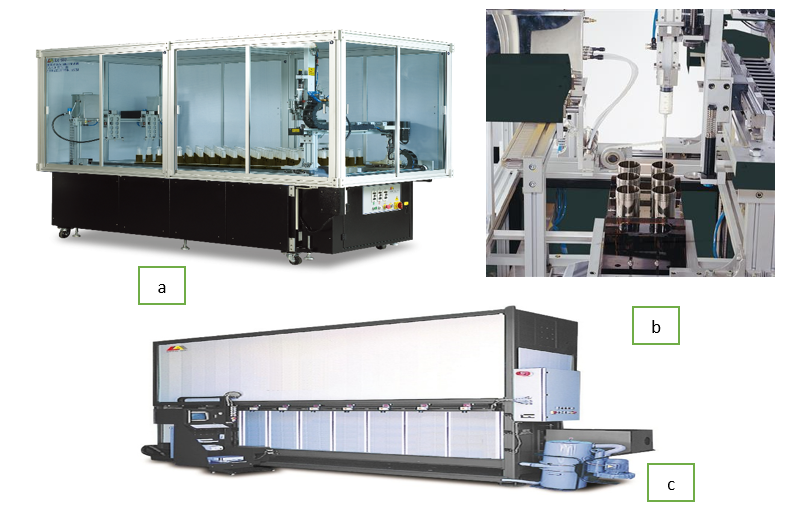With the technological development of the world, automation is becoming a household name, the Textile dyehouses are no different than that. Manufacturing efficacy, reducing bottlenecks, precision, and waste minimization are some of the targeted goals of green production and sustainable business plans which are assisted by implementing automation. Dyehouse’s efficiency and success lay in its percentage of RFT (Right First Time) which is highly influenced by technological support[1], [2]. Modern dyehouses moving towards a fully automated central monitoring system, central dispensing system, PLC-integrated dyeing machines, electronic dispensing pipette (EDP), automated lab dispensing system, and intelligent dyeing machines with temperature management and regulation system to save steam are some noteworthy automated technologies.
The RFT concept is cloven into two ideas, one is lab-to-bulk RFT and the other one is bulk-to-bulk RFT. In simple terms, if the first batch of bulk-dyed fabric shade matches the lab-dyed fabric, that is no lab-to-bulk variation known as lab-to-bulk RFT. Whereas, if there is no bulk-to-bulk variation then it’s called bulk-to-bulk-RFT. It is well known that a poor dyehouse RFT leads to business stresses like decrement in productivity, an increase in the cost per production, a rise in the lead time, and extra consumption of resources like steam, water, gas, and electricity[3], [4].
RFT can be improved with the adaptation of automation in some of the following ways:
- Automated Lab: From initial recipe generation to lab dyeing pot preparation is done with an auto lab dispensing system having an integrated computer color matching system. It’s much faster and more precise than the manual method and saves on average 30% of dye liquor waste. Accuracy in the lab dip is one of the prime prerequisites for achieving an excellent percentage of RFT.
- Weighing and Storage System: In the conventional process the chemicals are weighed manually and not always stored in ambient conditions henceforth the chances of error generation are significantly high. In contrast with the automated solution, the dyes and chemicals are stored in ambient conditions and distributed to each batch precisely. Additionally, the estimation of inventory levels for dyes and chemicals can be easily obtained. This information facilitates proactive procurement, thus mitigating the need to resort to alternative brands or classes of dyes in cases of unavailability.
- Auto dispensing system: It can be integrated with the weighing and storage system which saves time and minimizes human-driven error, leading to a better distribution of dyeing chemicals. The ultimate goal is to increase the accuracy and reproducibility of the shade and achieve a high RFT percentage.
- Smart Dyeing Machine: programmable logic controller (PLC) integrated dyeing machines are a very popular choice for dyehouses. The control of temperature, PH, and water level is much needed for RFT, a fluctuation can severely drop the RFT percentage. Furthermore, integrated pressure sensors and actuators can control the water pressure. Overall, a uniform dye migration with better uptake is achieved in the smart automated dyeing machines. Some dyeing machines are equipped with thermal management processes that conserve steam and gas energy.
- Central Monitoring system: It is a holistic approach to monitor and regulate all the machines and processes from a central hub. The intricate system improves the information flow, reduces manual touch, and ensures the proper distribution of inventory. The condition of the dyeing machines can also be under surveillance and routine maintenance can be done before reaching any problem.
With the implementation of automation in dyehouses it has been noticed that overall efficiency has been improved. In addition, increasing productivity by reducing the lead time and supporting the business to be more sustainable from both cost and environmental perspectives.
References:
- H. N. Harvey and J. Park, “Automation in the dyeing laboratory and its influence on accuracy in batch dyeing,” Journal of the Society of Dyers and Colourists, vol. 105, no. 5–6, pp. 207–211, May 1989, doi: 10.1111/j.1478-4408.1989.tb01209.x.
- M. Thangatamilan, S. J. Suji Prasad, C. Sagana, R. Subikshaa, D. P. Kumar, and M. M. Shimak, “Automation and Control Mechanism For Textile Dyeing Process Using PLC and IoT,” in 2023 International Conference on Circuit Power and Computing Technologies (ICCPCT), IEEE, Aug. 2023, pp. 485–490. doi: 10.1109/ICCPCT58313.2023.10244880.
- M. Morshed, “RFT Dyeing & Its Effect,” International Journal of Textile Science, vol. 2015, no. 1, pp. 20–26, 2015, doi: 10.5923/j.textile.20150401.03.
- J. Park and J. Shore, “Evolution of right-first-time dyeing production,” 2009. doi: 10.1111/j.1478-4408.2009.00194.x.
- Logic Art Automation Co. Ltd.
